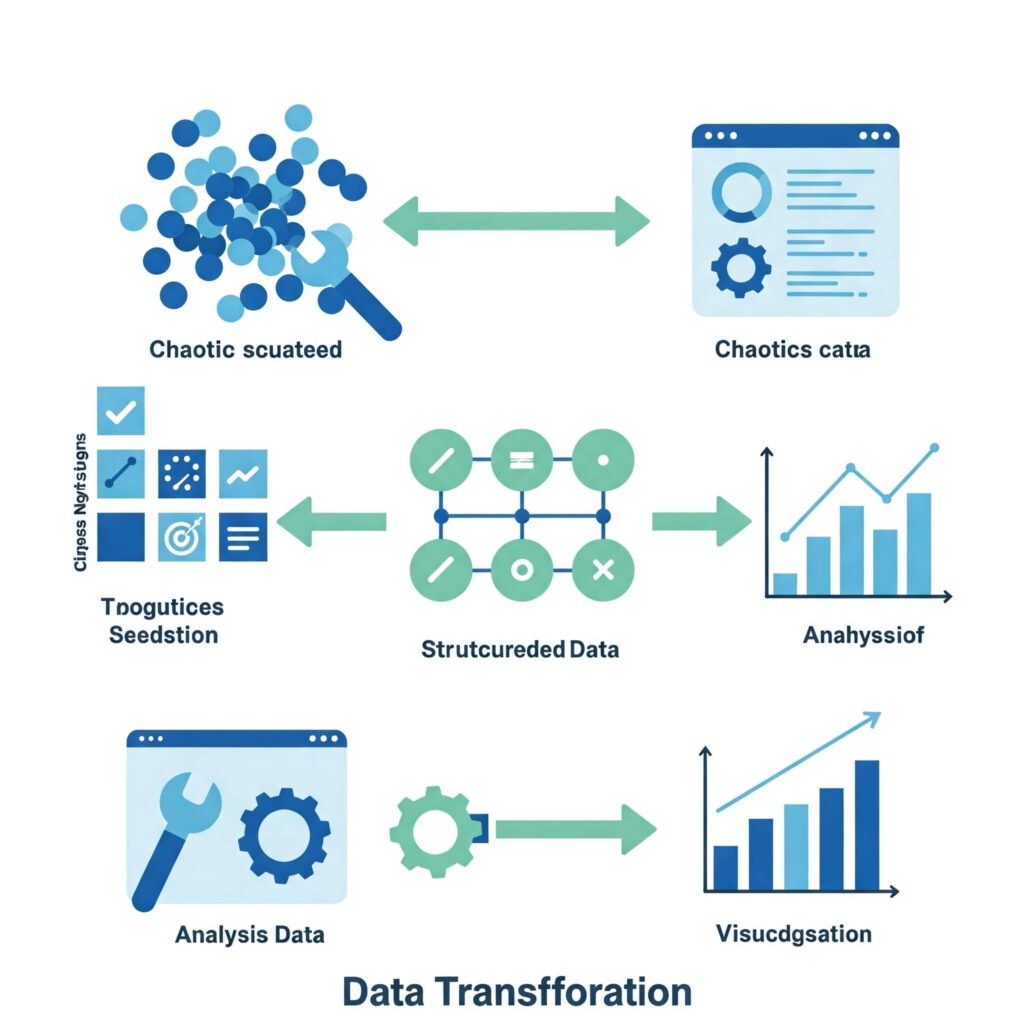Forget the stereotype of a hermit in a basement surrounded by monitors. A data analyst acts as a bridge between raw data and actionable business insights. Their primary goal is to collect, clean, analyze, and interpret complex datasets to help organizations understand trends, solve problems, and make informed strategic decisions. They turn numbers into stories that anyone can understand. So, understanding the core function is key when exploring Data Analyst roles.

Beyond the Buzzwords: Key Responsibilities in Data Analyst Roles
The day-to-day tasks within Data Analyst roles can vary depending on the industry and company size, but core responsibilities typically include:
- Data Collection: Gathering data from various sources like databases, surveys, APIs, and spreadsheets.
- Data Cleaning & Preprocessing: This is crucial! Raw data is messy. Analysts spend a significant amount of time cleaning, transforming, and structuring data to make it usable for analysis.
- Data Analysis: Applying statistical methods and analytical techniques to identify patterns, correlations, and trends within the data.
- Data Interpretation: Translating analysis results into clear, concise, and easy-to-understand findings for stakeholders who may not be technical experts.
- Data Visualization: Creating charts, graphs, dashboards, and reports to visually represent data and make insights accessible and compelling.
- Communicating Findings: Presenting results and recommendations to teams, managers, or clients, often telling a story with the data.
- Collaborating: Working closely with other teams (like marketing, sales, product, or engineering) to understand their data needs and deliver relevant insights.
Understanding these responsibilities is vital when evaluating if Data Analyst roles align with your interests and skills.
Essential Skills Required for Data Analyst Roles
To excel in Data Analyst roles, you need a blend of technical proficiency and strong soft skills.
Technical Skills for Data Analyst Roles (H3 – Synonym)
These are the tools of the trade:
- SQL (Structured Query Language): Non-negotiable. You’ll use it constantly to extract and manipulate data from databases.
- Outbound Link Placeholder: Link to a popular SQL learning resource (e.g., W3Schools SQL Tutorial or Mode Analytics SQL Tutorial).
- Spreadsheet Software (Excel, Google Sheets): Essential for data cleaning, basic analysis, and reporting, especially in smaller datasets.
- Statistical Programming Languages (Python or R): Used for more complex statistical analysis, data manipulation, and automation. Python is increasingly popular due to its versatility and libraries (Pandas, NumPy, Scikit-learn).
- Outbound Link Placeholder: Link to a beginner’s Python data analysis tutorial (e.g., Kaggle Python Tutorial or DataCamp Introduction to Python).
- Data Visualization Tools (Tableau, Power BI, Looker, Matplotlib/Seaborn in Python): Transforming data into visual stories is a core part of Data Analyst roles. Proficiency in at least one major tool is expected.
Beyond Tech: Soft Skills for Data Analyst Roles (H3 – Synonym)
These are just as critical as the technical ones:
- Problem-Solving: Identifying the right questions to ask and determining the best way to use data to answer them.
- Critical Thinking: Evaluating data sources, assumptions, and results with a skeptical and analytical mind.
- Communication: Explaining complex findings clearly and concisely to non-technical audiences, both verbally and in writing. Telling a compelling story with your data is key.
- Curiosity: A genuine desire to dig into data, understand why something is happening, and uncover hidden insights.
- Attention to Detail: Data cleaning and analysis require meticulousness to avoid errors that can lead to incorrect conclusions.
Cultivating both sets of skills is crucial for aspiring candidates pursuing Data Analyst roles.

Education and Background for Data Analyst Roles
While a degree in a quantitative field like Statistics, Mathematics, Computer Science, or Economics is common, it’s not always mandatory for Data Analyst roles. Many successful analysts come from diverse backgrounds and gain the necessary skills through:
- Online courses (Coursera, edX, Udacity)
- Data analytics bootcamps
- Self-learning through projects and tutorials
- Transferable skills from previous roles
What’s often more important than a specific degree is demonstrating your ability to think analytically, work with data, and learn new tools.
Is a Data Analyst Role Right for You?
Consider these questions before applying for Data Analyst roles:
- Do you enjoy working with numbers and uncovering patterns?
- Are you naturally curious and love solving puzzles?
- Can you explain complex ideas in simple terms?
- Are you patient and meticulous, especially when dealing with details?
- Are you comfortable using technology and learning new software?
If you answered yes to most of these, a career in data analysis could be a great fit!
Preparing Your Application for Data Analyst Roles
Landing one of the competitive Data Analyst roles requires more than just listing skills on a resume. Here’s how to prepare:
- Build a Portfolio: Create projects that showcase your skills. Use publicly available datasets (like those on Kaggle) or analyze data from your own interests. Clean the data, perform analysis, create visualizations, and explain your process and findings clearly. This is your opportunity to demonstrate practical skills.
- Outbound Link Placeholder: Link to an article or platform about building a data portfolio (e.g., Kaggle profiles or Medium articles on portfolio projects).
- Master Essential Tools: Don’t just list SQL; know SQL. Practice with Python/R and build dashboards with Tableau/Power BI. Hands-on experience is invaluable.
- Understand the Industry: Research the companies and industries you’re applying to. How do they use data? Tailor your application to their specific needs.
- Network: Connect with data professionals on LinkedIn. Attend webinars or local meetups. Learning from others and getting insights into real-world Data Analyst roles is highly beneficial.
- Practice for Interviews: Be prepared to discuss your projects, explain your analytical thinking process, and potentially solve a technical problem or case study.

Conclusion
Data Analyst roles offer exciting opportunities for those who are curious, analytical, and enjoy turning data into meaningful insights. It’s a field that requires continuous learning, a blend of technical and soft skills, and the ability to communicate effectively. By understanding the core responsibilities, developing the necessary skills, and building a strong portfolio, you can significantly increase your chances of landing a fulfilling role in this dynamic field. Don’t just apply; prepare thoroughly and show them what you can do with data!
